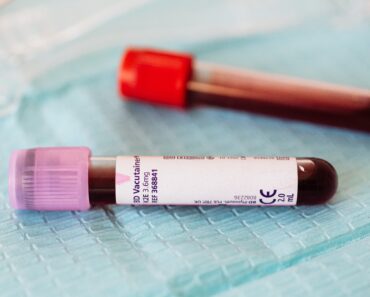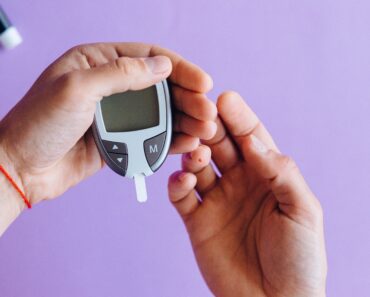Mold illness can evoke a sense of fear and unease. As stated by Surviving Mold, mold consists of biotoxins that the body struggles to eliminate. Once these biotoxins infiltrate the body, they can unleash havoc, giving rise to a variety of symptoms. Although these symptoms may exhibit variations among individuals, it is prudent to be vigilant about the top 10 indicators of mold illness, as elucidated by the Mayo Clinic.
First, we go over the 10 symptoms of mold illness, and afterward, we cover what you can do about it.
10. Sneezing

© SHUTTERSTOCK
Sneezing can be a common manifestation in individuals exposed to mold. Mold spores possess the ability to provoke cold and allergy-like symptoms, including sneezing. This occurs as a result of the irritation caused by mold spores in the nasal passages and throat, triggering the reflex to sneeze.
9. Runny or stuffy nose

© SHUTTERSTOCK
A runny or congested nose is another prominent symptom associated with mold illness. The immune system responds to the presence of mold spores by generating mucus as a defense mechanism, aiming to prevent the entry of these spores into the body. Consequently, the excess mucus production can result in a runny or stuffy nose, contributing to the overall discomfort experienced by individuals affected by mold illness.
8. Dry, scaly skin

© SHUTTERSTOCK
Experiencing dry and scaly skin is a common occurrence during an allergic reaction to mold. The immune system’s overreaction to the mold allergen can result in inflammation and irritation of the skin. This exaggerated immune response leads to the manifestation of various skin-related symptoms. In some cases, mold exposure can even induce the development of itchy hives, and raised welts on the skin. The allergic response to mold can disrupt the skin’s normal balance, causing dryness, scaliness, and other uncomfortable skin conditions.
7. Itchy eyes, nose, and throat

© SHUTTERSTOCK
Itchy eyes, nose, and throat are frequently encountered symptoms associated with mold exposure. Similar to other allergens like pollen, mold can stimulate the release of histamine in the body. Histamine is responsible for triggering various reactions, and among the most prevalent are the sensations of itchiness in the eyes, nose, and throat. These discomforting symptoms serve as indicators of the body’s immune response to the presence of mold allergens.
6. Watery eyes

© SHUTTERSTOCK
Watery eyes can be attributed to the action of histamines, which are chemical compounds released by the immune system to eliminate allergens and toxins from the body. When histamines are released in response to mold exposure, they can stimulate the eyes to produce excessive tears. This mechanism is employed by the body to flush out allergens, including mold particles, thereby aiding in the removal of potential irritants and promoting relief from the allergic reaction. Thus, watery eyes serve as a physiological response initiated by histamines to expel allergens from the body.
5. Coughing

© SHUTTERSTOCK
When you inhale mold spores, they irritate the lining of the throat. This causes coughing. Mold exposure can also lead to such complications as pneumonia and bronchitis, which result in further coughing.
4. Wheezing

© SHUTTERSTOCK
Wheezing stands out as a prevalent symptom experienced by individuals exposed to mold. The inhalation of minuscule mold spores can lead to irritation and inflammation of the linings in the throat, bronchial tubes, and lungs. This inflammation subsequently hampers the smooth flow of air, resulting in the characteristic wheezing sound during breathing. The restriction of airflow caused by inflamed respiratory passages is a direct consequence of mold exposure and serves as a significant indicator of mold-related respiratory distress.
3. Shortness of breath

© SHUTTERSTOCK
Shortness of breath is a closely associated symptom accompanying wheezing. When wheezing occurs, it often coincides with difficulty in breathing. Individuals with asthma should exercise caution, as exposure to mold can trigger not only shortness of breath but also escalate into a full-blown asthma attack. The presence of mold allergens can exacerbate respiratory symptoms, leading to heightened breathlessness and posing significant risks for individuals with pre-existing asthma conditions. It is crucial for those affected to be vigilant and take necessary precautions to minimize mold exposure and prevent the onset of severe respiratory complications.
2. Chest tightness

© SHUTTERSTOCK
Chest tightness is a commonly reported symptom among individuals who have been exposed to mold. The experience of pain in the chest area can vary, with some describing it as a sensation of tightness and others as a feeling of pressure. The intensity of the discomfort can range from mild to severe, with individuals experiencing varying levels of distress. This chest tightness or pressure is an indication of the impact of mold exposure on the respiratory system and can be a distressing symptom that prompts individuals to seek medical attention and address the underlying mold-related health issues.
1. Postnasal drip

© SHUTTERSTOCK
Postnasal drip is a common occurrence as a histamine reaction aimed at eliminating toxins from the body. When exposed to mold, the immune system responds by producing excess mucus in an effort to protect against mold spores and prevent their entry into the body. The persistent nasal discharge, also known as postnasal drip, is a mechanism employed by the body to remove potential irritants. This reaction underscores the body’s defensive response to mold exposure and its endeavor to maintain respiratory health by expelling harmful substances through increased mucus production.
To minimize the risk of mold exposure and reduce the likelihood of developing mold illness, implementing certain precautions is crucial. Here are some recommended steps provided by the Asthma and Allergy Foundation of America:
Utilize a dehumidifier: Use a dehumidifier in areas prone to high humidity, such as bathrooms, basements, and laundry rooms. This helps to reduce moisture levels and inhibit mold growth.
Enhance ventilation: Increase air circulation and reduce humidity by opening windows in bathrooms during and after showering. This allows for better airflow and helps to prevent the accumulation of moisture.
Promptly remove damp clothing: Remove clothing or other items from washing machines as soon as the cycle is complete. Leaving damp clothes in the machine can create a favorable environment for mold growth.
Check for condensation: Regularly inspect windows for condensation build-up, especially during colder months. Wipe off any moisture to prevent mold formation.
Repair leaks promptly: Act swiftly to repair any leaks or water damage in your home. Moisture from leaks can contribute to the growth of mold. Addressing these issues promptly helps to mitigate the risk of mold development.



